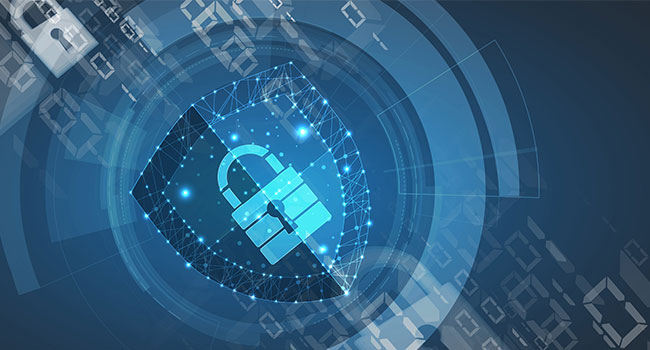Corporate Security Demystified: Strengthening Your Organization Defenses
Corporate Security Demystified: Strengthening Your Organization Defenses
Blog Article
From Cybersecurity to Physical Actions: Enhancing Company Protection in an Altering Globe
In today's rapidly evolving digital landscape, the value of corporate safety and security can not be overstated. As cyber dangers come to be prevalent and increasingly advanced, organizations need to surpass typical cybersecurity measures to guard their procedures and possessions - corporate security. This is where the combination of physical protection actions ends up being vital. By integrating the strengths of both cybersecurity and physical safety, firms can produce a comprehensive defense approach that attends to the diverse variety of hazards they encounter. In this discussion, we will certainly check out the changing danger landscape, the need to incorporate cybersecurity and physical safety, the implementation of multi-factor authentication actions, the relevance of worker awareness and training, and the adaptation of safety steps for remote labor forces. By examining these crucial areas, we will certainly gain important insights right into how organizations can reinforce their company safety in an ever-changing world.
Understanding the Transforming Danger Landscape
The progressing nature of the modern-day globe demands a thorough understanding of the changing threat landscape for efficient company protection. In today's electronic and interconnected age, threats to business safety have actually come to be more intricate and sophisticated. As modern technology developments and businesses come to be significantly dependent on electronic facilities, the potential for cyberattacks, data violations, and various other safety and security breaches has actually dramatically enhanced. It is essential for companies to stay informed and adapt their safety measures to resolve these advancing threats.
One key facet of understanding the altering danger landscape is recognizing the various kinds of dangers that organizations face. Cybercriminals are frequently establishing new methods to manipulate vulnerabilities in computer system systems and networks. These risks can vary from malware and ransomware strikes to phishing rip-offs and social engineering tactics. Additionally, physical dangers such as theft, vandalism, and corporate espionage stay common issues for companies.
Surveillance and assessing the hazard landscape is vital in order to determine possible dangers and susceptabilities. This includes staying upgraded on the most current cybersecurity fads, analyzing risk knowledge reports, and performing regular threat evaluations. By understanding the altering risk landscape, organizations can proactively apply suitable security actions to alleviate threats and protect their possessions, reputation, and stakeholders.
Integrating Cybersecurity and Physical Safety And Security
Integrating cybersecurity and physical safety is critical for detailed company protection in today's interconnected and digital landscape. As organizations progressively depend on innovation and interconnected systems, the limits in between physical and cyber dangers are ending up being obscured. To effectively secure against these risks, a holistic strategy that integrates both cybersecurity and physical safety and security actions is essential.
Cybersecurity focuses on safeguarding electronic properties, such as systems, data, and networks, from unapproved gain access to, disturbance, and burglary. Physical safety, on the various other hand, includes actions to secure physical possessions, people, and facilities from threats and vulnerabilities. By incorporating these two domains, organizations can address susceptabilities and dangers from both electronic and physical angles, thereby improving their general protection pose.
The assimilation of these 2 self-controls permits an extra extensive understanding of safety threats and enables a unified action to cases. Physical gain access to controls can be improved by incorporating them with cybersecurity protocols, such as two-factor authentication or biometric identification. Likewise, cybersecurity procedures can be enhanced by physical security measures, such as surveillance video cameras, alarm systems, and secure gain access to factors.

Carrying Out Multi-Factor Verification Measures
As organizations significantly focus on extensive safety measures, one reliable approach is the application of multi-factor authentication procedures. Multi-factor authentication (MFA) is a protection approach that calls for users to give numerous types of identification to access a system or application. This approach includes an added layer of defense by combining something the individual recognizes, such as a password, with something they have, like a safety or a finger print token.
By executing MFA, companies can substantially enhance their safety and security posture - corporate security. Typical password-based authentication has its constraints, as passwords can be quickly endangered or failed to remember. MFA minimizes these threats by adding an extra authentication variable, making it much more challenging for unapproved individuals to get to delicate information
There are several kinds of multi-factor authentication methods offered, consisting of biometric authentication, SMS-based confirmation codes, and equipment tokens. Organizations need to analyze their specific requirements and pick one of the most proper MFA service for their requirements.
Nonetheless, the application of MFA need to be carefully intended and performed. It is essential to strike an equilibrium in between security and use to prevent user irritation and resistance. Organizations needs to additionally consider potential compatibility concerns and offer ample training and assistance to make sure a smooth transition.
Enhancing Staff Member Recognition and Training
To reinforce company security, organizations need to focus on improving worker awareness and training. i loved this In today's swiftly advancing hazard landscape, workers play an important function in protecting a company's sensitive information and properties. However, many safety and security breaches occur as a result of human mistake or absence of understanding. Companies need to spend in comprehensive training programs to enlighten their workers about potential dangers and the best techniques for mitigating them.
Reliable staff member recognition and training programs ought to cover a wide variety of subjects, including information defense, phishing assaults, social design, password health, and physical safety and security steps. These programs ought to be tailored to the details needs and obligations of various employee duties within the organization. Routine training sessions, simulations, and workshops can help workers create the necessary skills and knowledge to recognize and react to safety and security dangers successfully.
Furthermore, companies ought to urge a society of protection awareness and supply ongoing updates and pointers to maintain workers notified regarding the most up to date risks and mitigation methods. This can be done through inner interaction networks, such as newsletters, intranet websites, and e-mail campaigns. By fostering a security-conscious labor force, organizations can significantly minimize the likelihood of safety cases and secure their beneficial possessions from unapproved accessibility or compromise.

Adapting Security Measures for Remote Labor Force
Adjusting company safety and security steps to accommodate a remote labor force is crucial in guaranteeing the defense of sensitive information and possessions (corporate security). With the enhancing pattern of remote work, companies should execute appropriate safety actions to minimize the risks connected with this brand-new way of working
One crucial aspect of adapting safety and security procedures for remote job is developing protected interaction networks. Encrypted messaging systems and online personal networks (VPNs) can assist protect sensitive information and prevent unapproved access. Additionally, organizations should impose making use of solid passwords and multi-factor authentication to boost the safety of remote access.
Another essential factor to consider is the execution of safe remote access remedies. This entails providing staff members with safe access to corporate sources and data via virtual desktop facilities (VDI), remote desktop methods (RDP), or cloud-based services. These technologies make sure that sensitive info stays safeguarded while enabling staff members to execute their duties efficiently.

Last but not least, comprehensive safety recognition training is critical for remote employees. Training sessions should cover best practices for safely accessing and taking care of delicate information, recognizing and reporting phishing attempts, and preserving the total cybersecurity health.
Conclusion
To conclude, as the threat landscape remains important site to advance, it is vital for companies to reinforce their protection gauges both in the cyber and physical domains. Integrating cybersecurity and physical protection, applying multi-factor authentication procedures, and enhancing staff member awareness and training are essential steps in the direction of attaining durable company safety and security. Additionally, adjusting security actions to fit remote workforces is critical in today's altering globe. By executing these procedures, organizations can minimize dangers and secure their beneficial assets from possible threats.
In this conversation, we will check out the Go Here transforming hazard landscape, the demand to integrate cybersecurity and physical safety and security, the execution of multi-factor authentication measures, the importance of staff member awareness and training, and the adaptation of security actions for remote labor forces. Cybersecurity actions can be matched by physical protection procedures, such as monitoring video cameras, alarm systems, and safe and secure gain access to points.
As organizations progressively focus on extensive protection steps, one efficient approach is the implementation of multi-factor verification steps.In verdict, as the danger landscape continues to develop, it is essential for companies to reinforce their safety and security gauges both in the cyber and physical domains. Incorporating cybersecurity and physical protection, implementing multi-factor verification steps, and boosting employee understanding and training are vital steps in the direction of accomplishing robust company safety.
Report this page